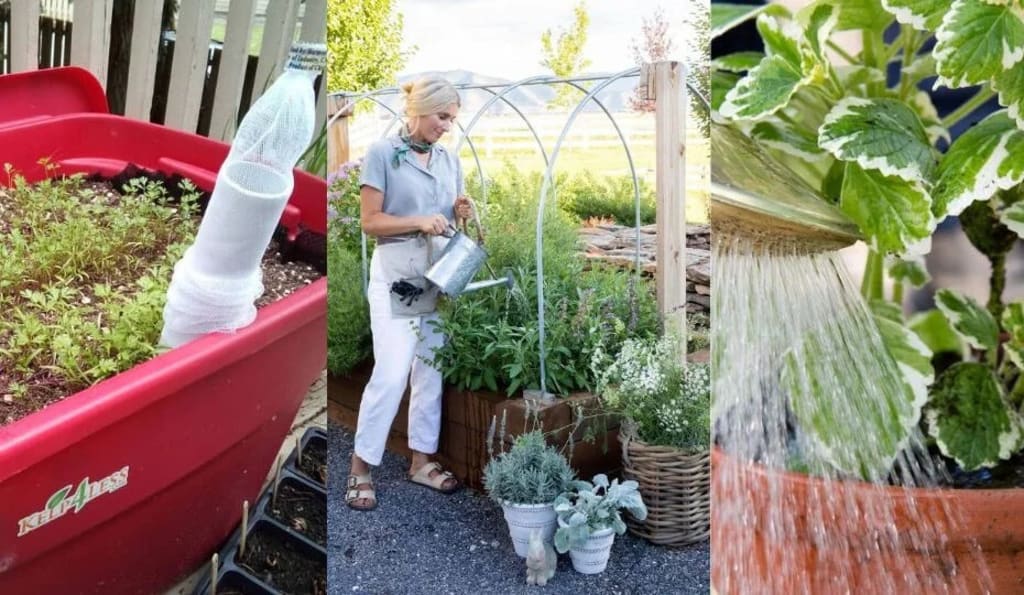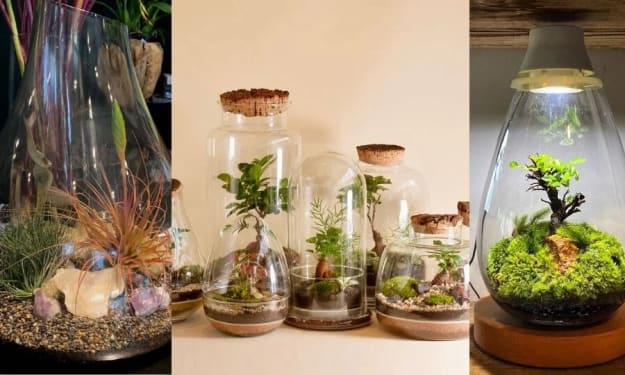The Ultimate Guide to Watering Outdoor Potted Plants Perfectly
Watering outdoor potted plants may seem straightforward, but achieving the perfect balance can be challenging. Too much water can drown roots, while too little can lead to wilting and stress. In this comprehensive guide, we'll delve into the art and science of watering outdoor potted plants to help you master this essential aspect of gardening. From understanding plant needs to implementing watering techniques, let's ensure your plants thrive with the right amount of moisture.

Before diving into watering techniques, it's crucial to understand the water requirements of your outdoor potted plants. Factors influencing watering frequency include:
Plant Species: Different plants have varying water needs based on their species, size, and stage of growth. Research the specific requirements of each plant in your pots to tailor your watering regimen accordingly.
Pot Size and Material: Larger pots retain more moisture and dry out more slowly than smaller pots. Additionally, porous materials like terracotta allow moisture to evaporate more quickly than plastic or glazed ceramic pots.
Environmental Conditions: Factors such as temperature, humidity, sunlight exposure, and wind can affect soil moisture levels. Monitor weather patterns and adjust your watering schedule accordingly.
Soil Type: Soil composition influences water retention and drainage. Sandy soils drain quickly and may require more frequent watering, while clay soils retain moisture longer.
Implementing Watering Techniques:
Now that you understand plant needs, let's explore effective watering techniques to ensure optimal moisture levels:
Watering Frequency: Rather than adhering to a strict schedule, monitor soil moisture levels and water plants when needed. Insert your finger into the soil up to the first knuckle—if it feels dry, it's time to water.
Deep Watering: When watering, apply water slowly and deeply to encourage roots to grow downward. Ensure water penetrates the entire root zone rather than just wetting the surface.
Watering Early: Water outdoor potted plants in the morning to minimize evaporation and give plants ample time to absorb moisture before the heat of the day.
Mulching: Apply a layer of organic mulch, such as compost, shredded bark, or straw, around the base of potted plants. Mulch helps retain soil moisture, suppresses weeds, and regulates soil temperature.
Drip Irrigation: Consider installing a drip irrigation system for potted plants, especially if you have a large collection. Drip irrigation delivers water directly to the root zone, minimizing water waste and promoting efficient watering.
Self-Watering Systems: Explore self-watering pots or watering stakes that provide a reservoir of water for plants to absorb as needed. These systems can help maintain consistent moisture levels, particularly during hot weather or when you're away from home.
Signs of Overwatering and Underwatering:
To ensure you're watering outdoor potted plants perfectly, watch for signs of overwatering and underwatering:
Overwatering: Signs of overwatering include yellowing leaves, wilting despite moist soil, mold or algae growth on the soil surface, and a foul odor emanating from the potting mix.
Underwatering: Symptoms of underwatering include wilting, dry and brittle leaves, browning leaf edges, and soil that pulls away from the sides of the pot.
Adjusting Watering Practices:
Based on your observations and the needs of your plants, adjust your watering practices as necessary:
Summer vs. Winter: Outdoor potted plants may require more frequent watering during hot, dry summer months and less frequent watering during cooler, rainy periods in winter.
Container Type: Larger pots and those made of porous materials typically require less frequent watering than smaller pots and non-porous containers.
Plant Growth Stage: Newly planted or transplanted potted plants may require more frequent watering initially until their roots become established.
Conclusion:
Mastering the art of watering outdoor potted plants is essential for maintaining healthy, thriving greenery in your garden. By understanding plant needs, implementing appropriate watering techniques, and adjusting practices based on environmental factors, you can ensure your potted plants receive the perfect amount of moisture. With careful attention and observation, you'll nurture vibrant, flourishing plants that enhance the beauty of your outdoor space.
[For more gardening tips and inspiration, visit GardenersSchool.com.]





Comments
There are no comments for this story
Be the first to respond and start the conversation.